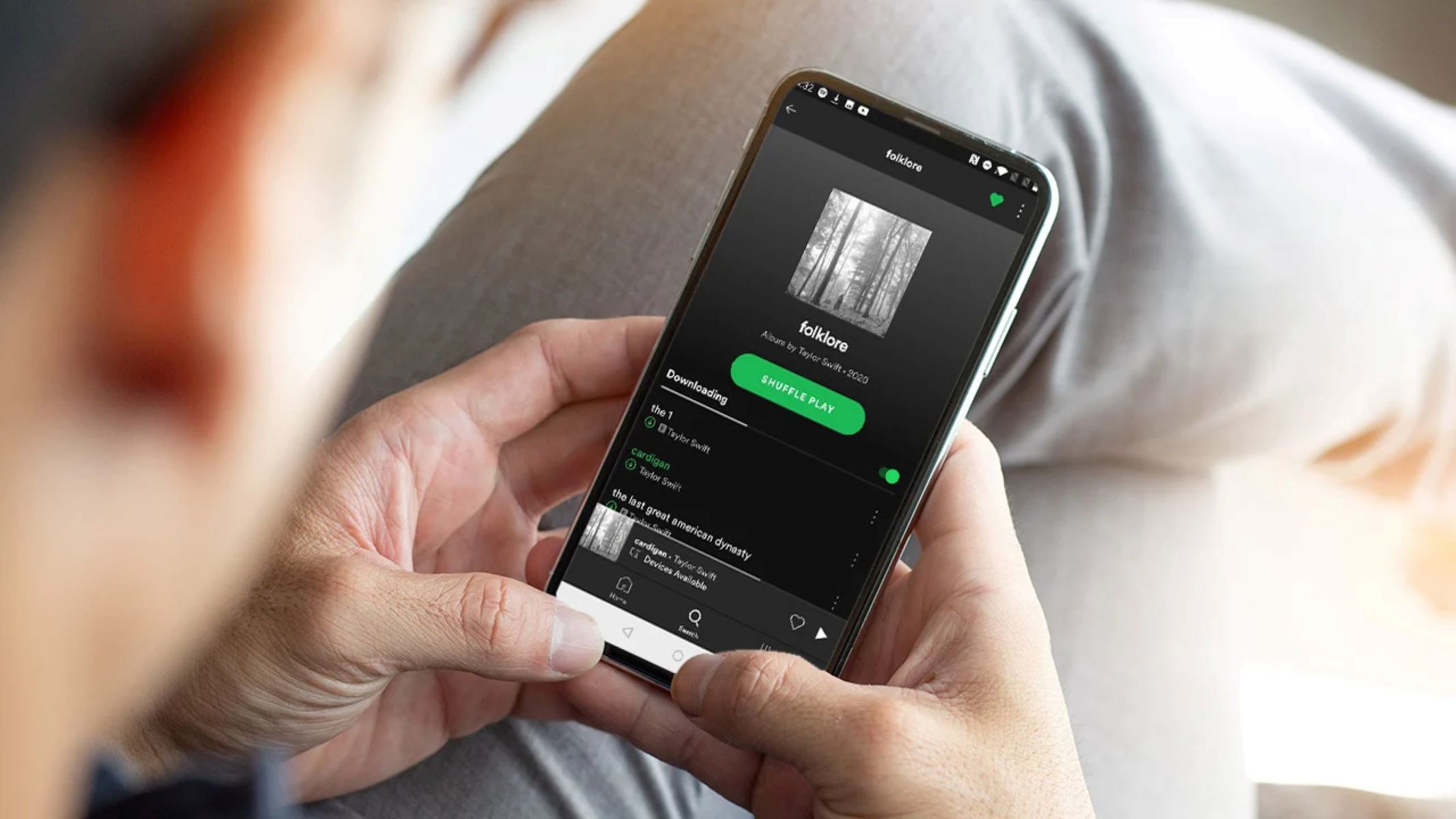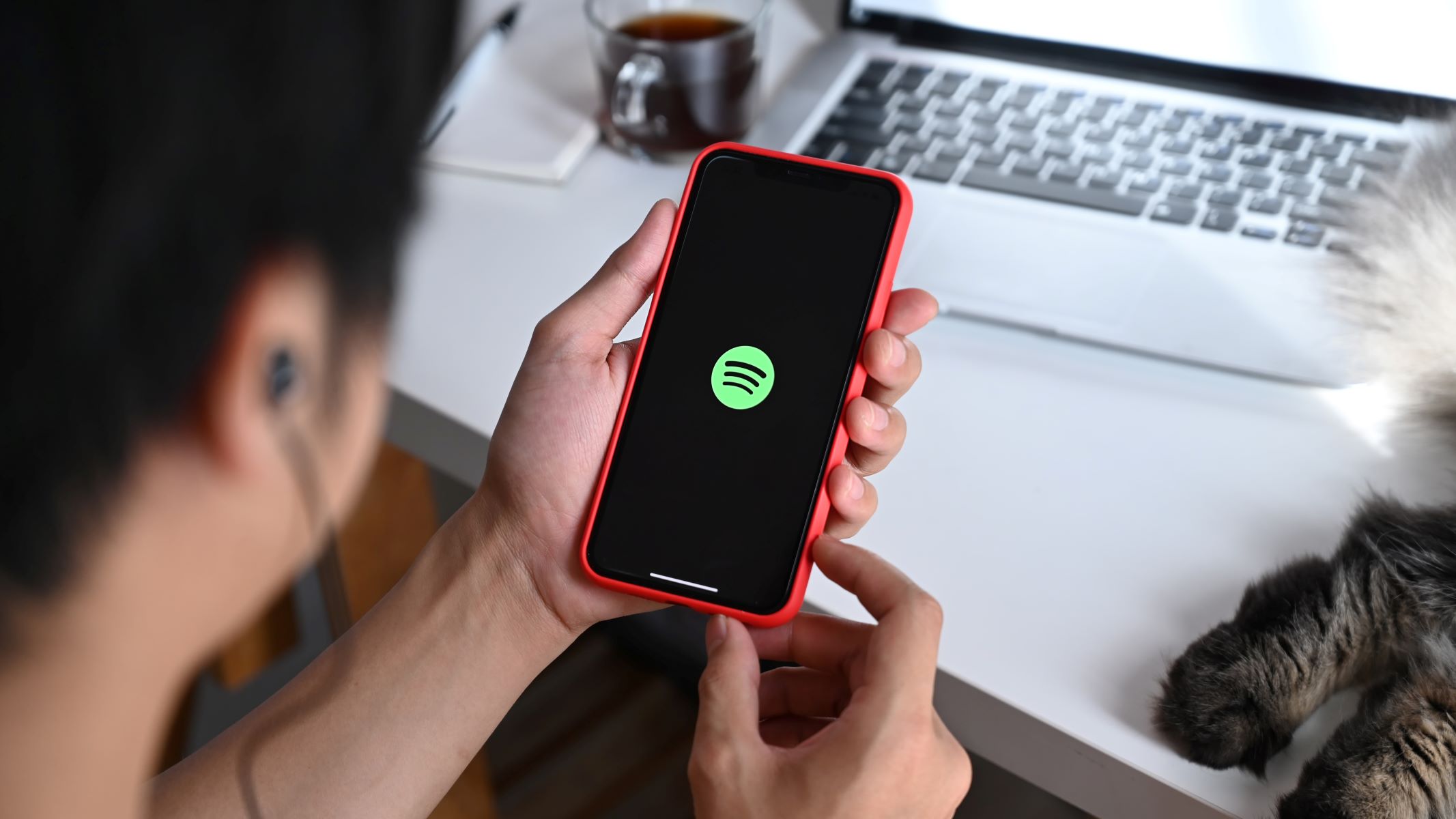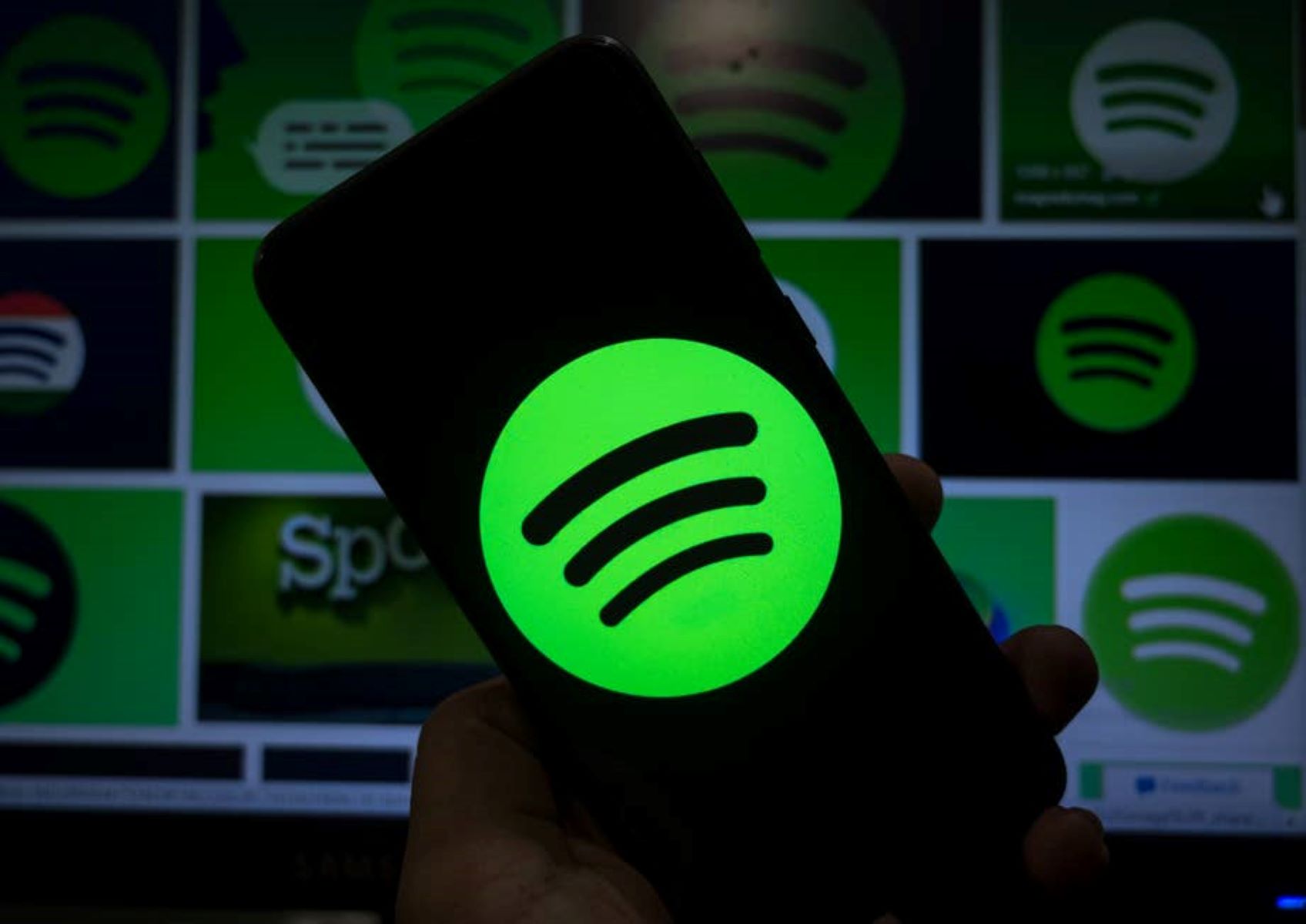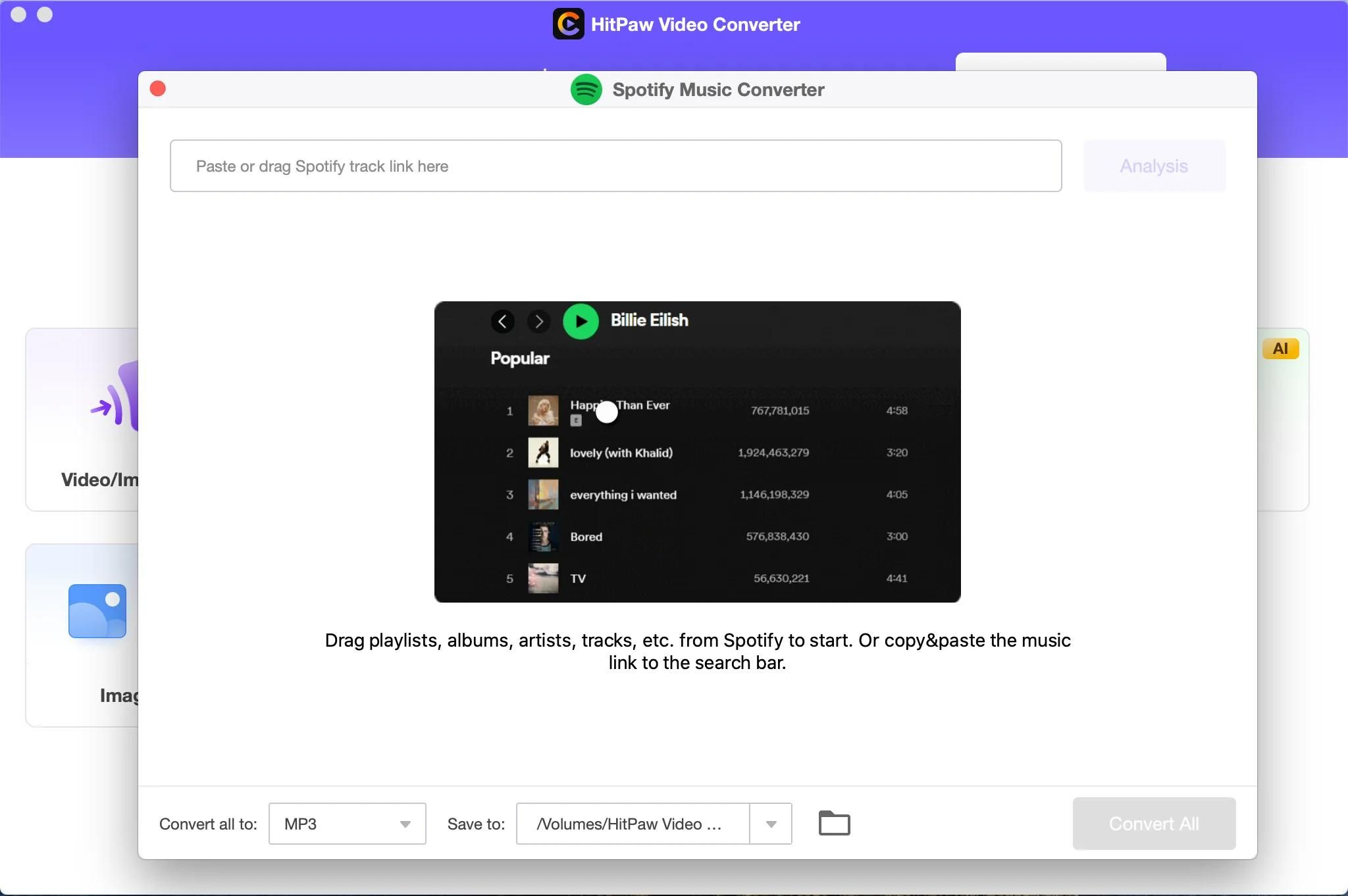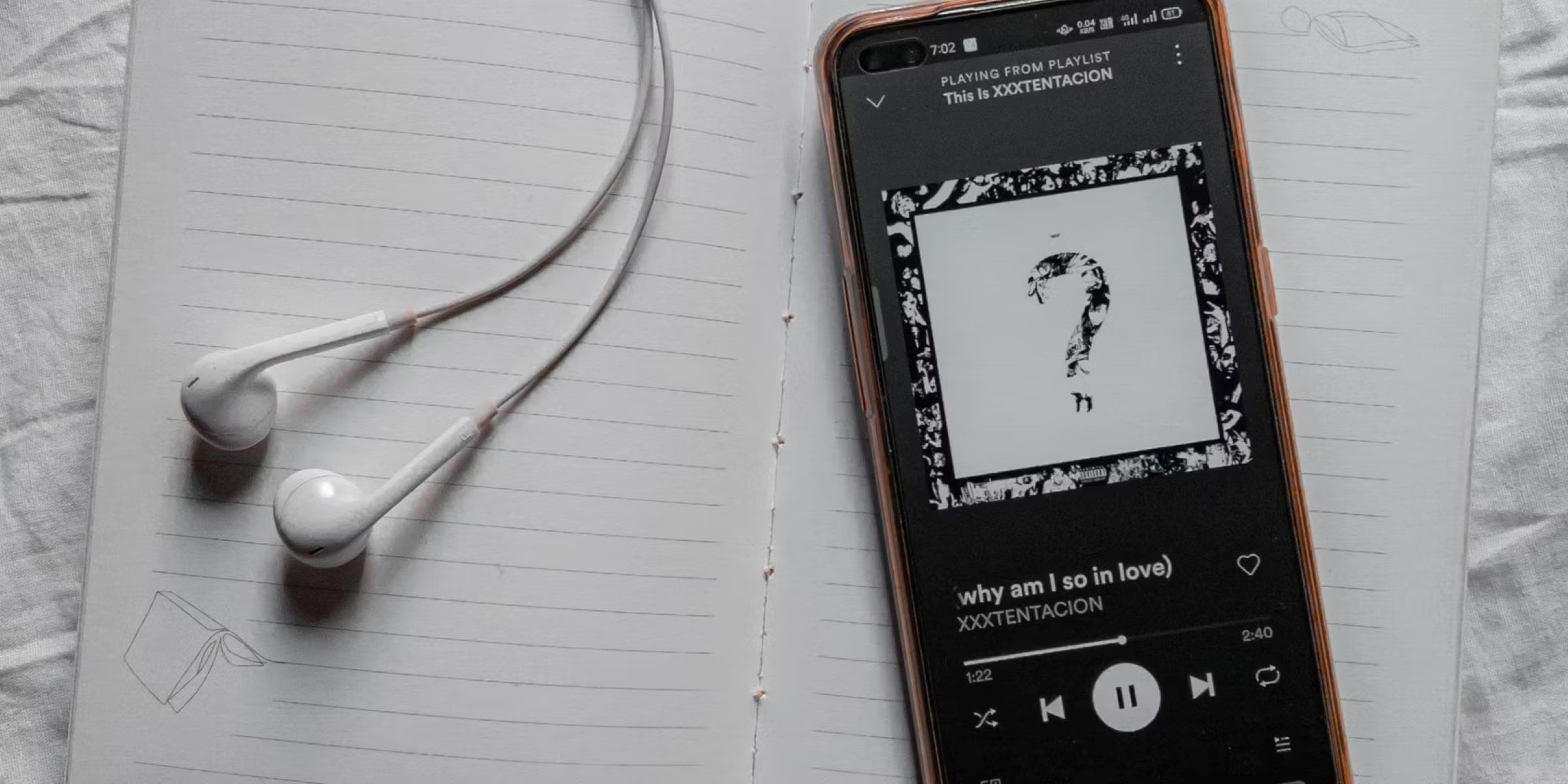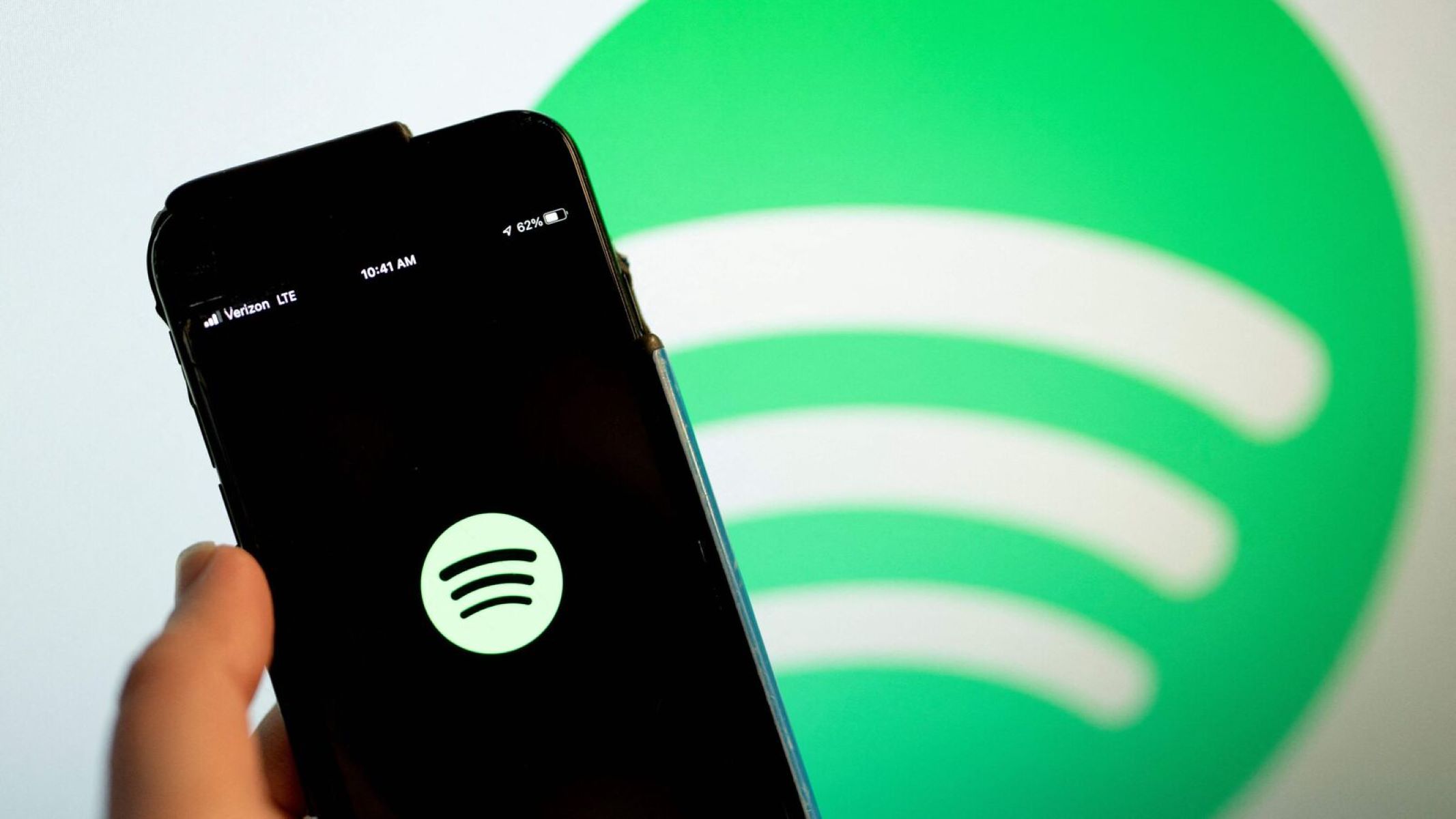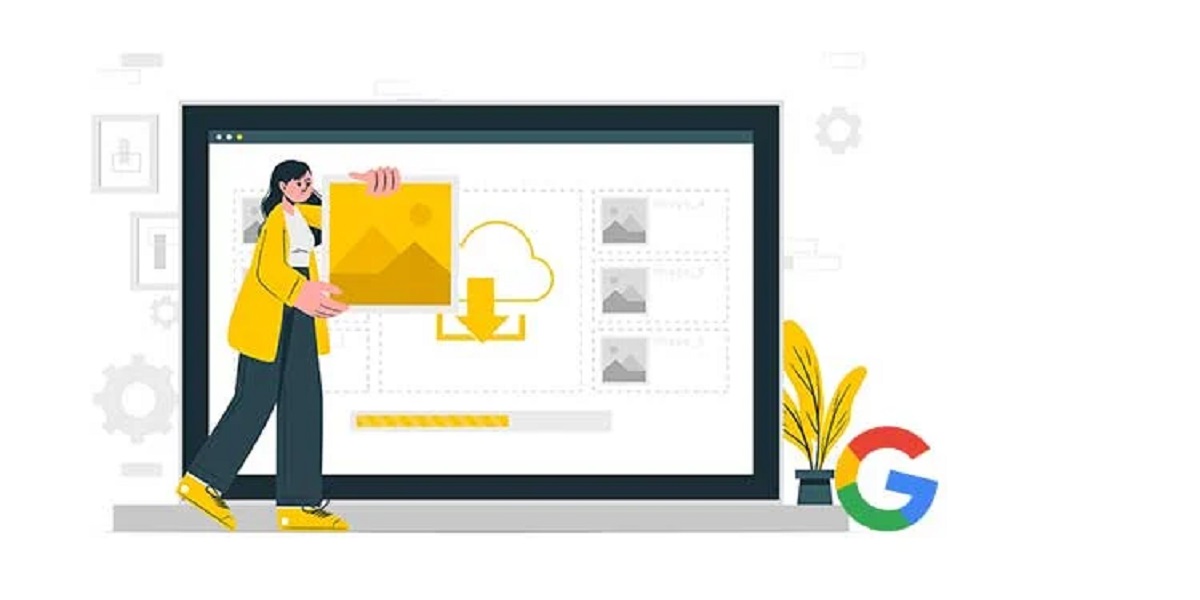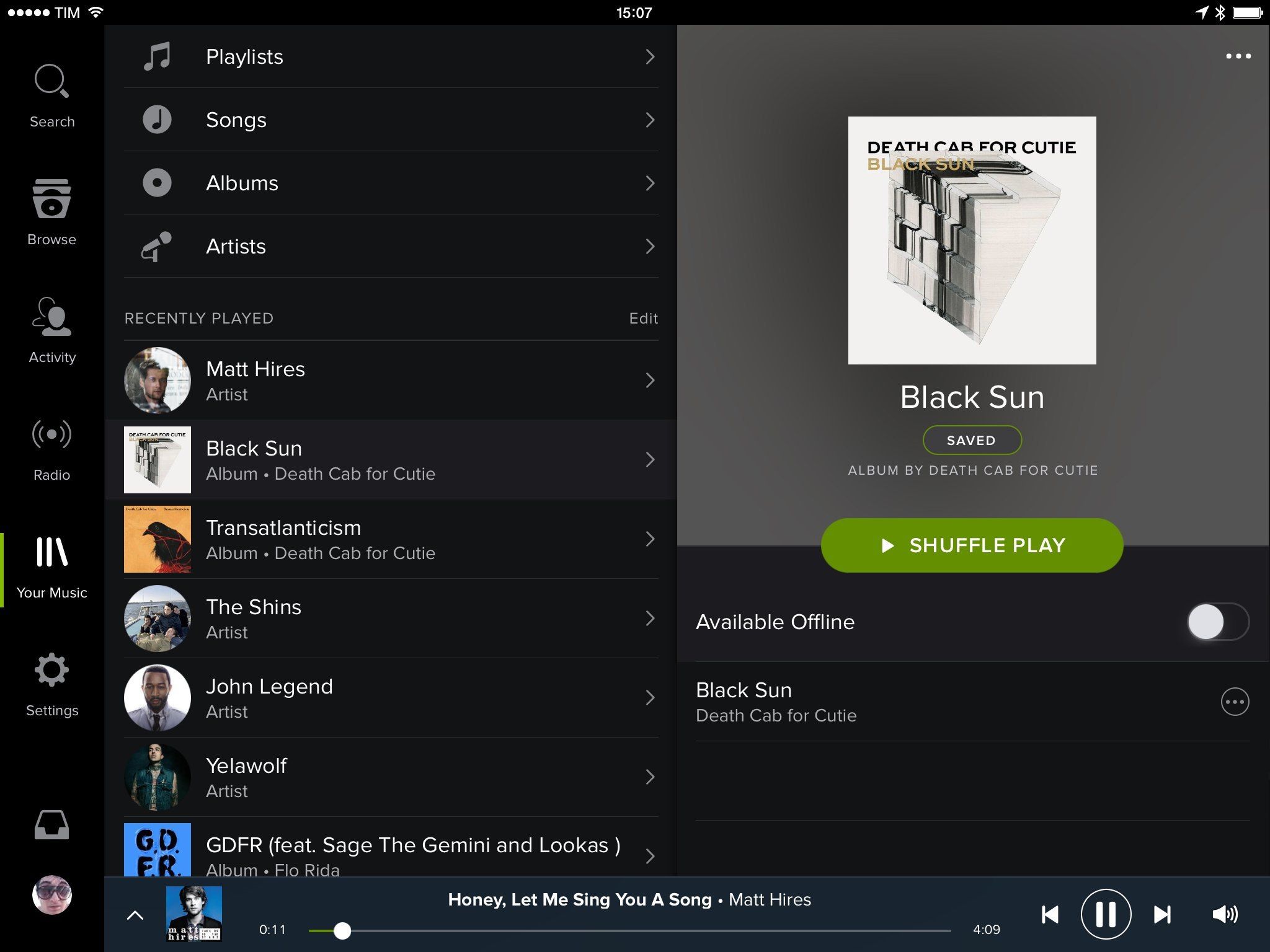Introduction
Spotify is a popular music streaming platform that allows users to access a vast library of songs, podcasts, and other audio content. It offers a convenient option to download music and listen offline, which can be a lifesaver during commutes or when internet connectivity is limited. However, there may be instances when Spotify won’t download songs or playlists, leaving users frustrated and eager to find a solution.
Understanding the potential reasons behind this issue is crucial in troubleshooting and resolving it. In this article, we will explore some common factors that can prevent Spotify from downloading content and provide you with troubleshooting steps to help you get back to enjoying your favorite music in no time.
It’s important to note that the exact cause may vary from user to user, and not all solutions may work for everyone. However, by following the steps outlined in this guide, you’ll have a good starting point to identify and resolve the issue.
Possible reasons why Spotify won’t download
There can be several reasons why Spotify is unable to download songs or playlists. Understanding these reasons can help you narrow down the potential causes and find an appropriate solution. Here are some common factors to consider:
- Insufficient storage space: If your device doesn’t have enough free space, Spotify won’t be able to download any new content. Make sure to check your device’s storage and free up some space if needed.
- Slow or inconsistent internet connection: A poor internet connection can hinder Spotify’s ability to download music. Ensure that you have a stable and fast internet connection while trying to download songs or playlists.
- Outdated app version: Using an outdated version of the Spotify app can lead to various issues, including problems with downloading content. Make sure to keep your app up to date to avoid any compatibility issues.
- Download restrictions on albums or playlists: Spotify allows artists and labels to set restrictions on downloading certain albums or playlists. If you’re unable to download specific content, it could be due to these restrictions set by the rights holders.
- Corrupted cache files: Over time, cache files can become corrupted and cause issues with various app functions, including downloading music. Clearing the cache can help resolve this.
- Glitches or bugs in the app: Like any software, Spotify can experience glitches or bugs that may interfere with the download functionality. Updating the app or reinstalling it can sometimes resolve these issues.
- Compatibility issues with the device: Certain devices may have compatibility issues with the Spotify app, leading to downloading problems. Checking for any compatibility updates or contacting the device manufacturer for assistance can help resolve this.
It’s important to note that these are just some of the possible reasons why Spotify won’t download content. Your specific situation may have unique factors that need to be considered. In the following sections, we will provide troubleshooting steps to address these issues and help you resolve the problem.
Insufficient storage space
One of the most common reasons why Spotify may not be able to download songs or playlists is due to insufficient storage space on your device. When you try to save new content, Spotify requires enough free space to store the downloaded files. If your device’s storage is running low, it can prevent the app from downloading any new music.
To address this issue, you can take the following steps:
- Check storage availability: Go to your device’s settings and find the storage or storage management section. Here, you can see an overview of your device’s storage and how much space is being used. If you’re running low on storage, consider deleting unnecessary files or apps to free up space.
- Clear cache and data: Spotify stores temporary files and cached data on your device. Clearing these files can help free up some storage space. To do this, go to your device’s settings, find the Apps or Applications section, locate Spotify, and select the option to clear cache and data. Keep in mind that clearing data will also log you out of the app, so be prepared to sign back in.
- Manage offline downloads: If you have a lot of songs or playlists downloaded for offline listening, consider deleting some of them to make room for new downloads. Open the Spotify app, go to your library, and select the ‘Downloads’ tab. From here, you can manually remove individual songs or entire playlists to free up storage space.
By ensuring that you have sufficient storage space on your device, you can eliminate one potential barrier to downloading music on Spotify. If this issue persists even after freeing up storage, you may need to look into other possible causes outlined in the upcoming sections.
Slow or inconsistent internet connection
An essential requirement for downloading music on Spotify is a stable and fast internet connection. If your connection is slow or inconsistent, it can hinder the app’s ability to download songs or playlists. This can be a frustrating issue, especially if you’re trying to enjoy music offline during a poor internet connection or in areas with limited connectivity.
To address this issue, here are some steps you can take:
- Check your internet speed: Run a speed test on your device to determine the actual speed of your internet connection. There are numerous websites and apps available to conduct speed tests, which will provide you with information about your download and upload speeds. If you notice that your internet speed is significantly slower than expected, contact your internet service provider to investigate the issue.
- Switch to a different network: If possible, try connecting to a different Wi-Fi network or use a cellular data connection to see if the issue is specific to your current network. Sometimes, switching to a different network can help resolve temporary connectivity problems.
- Move closer to your router: If you’re experiencing a weak Wi-Fi signal, try moving closer to your router to improve the connection quality. Thick walls and long distances can weaken Wi-Fi signals, affecting the download speed and stability.
- Restart your router: Sometimes, simply restarting your router can resolve internet connectivity issues. Unplug your router from the power source, wait for a few seconds, and then plug it back in. Allow the router to fully restart before attempting to download music on Spotify again.
- Limit other devices’ internet usage: If multiple devices are connected to your network and using a significant amount of bandwidth, it can affect the download speed on Spotify. Ensure that other devices are not heavily utilizing the internet while you’re trying to download music.
By addressing any issues related to your internet connection, you can improve the download speed and stability on Spotify. If slow or inconsistent internet remains a persistent problem, you may need to explore other potential causes discussed in the following sections.
Outdated app version
Using an outdated version of the Spotify app can cause various issues, including problems with downloading content. Developers frequently release updates to improve the app’s performance, fix bugs, and ensure compatibility with the latest operating systems and devices. If you’re experiencing difficulties downloading music on Spotify, it’s crucial to check if you’re using the most recent version of the app.
To address this issue, follow these steps:
- Check for app updates: Open the app store on your device – Google Play Store for Android or the App Store for iOS – and search for “Spotify.” If an update is available, you’ll see an “Update” button next to the app. Tap on it to download and install the latest version of Spotify.
- Enable automatic updates: To ensure you always have the latest version of the Spotify app, consider enabling automatic updates on your device. This way, you won’t have to manually check for updates, and the app will be updated in the background whenever a new version becomes available.
- Reinstall the app: If you’re still experiencing issues with downloading music even after updating the app, consider reinstalling it. Uninstall the Spotify app from your device, then go back to the app store and download a fresh copy. This process can help resolve any conflicts or corrupted files that may be causing the problem.
By ensuring that you have the latest version of the Spotify app installed on your device, you can take advantage of the app’s newest features and improvements while addressing any downloading issues that may arise from using an outdated version. If this issue continues to persist, it may be necessary to explore other potential causes, which will be discussed in the upcoming sections.
Download restrictions on albums or playlists
Spotify allows artists and labels to set restrictions on downloading specific albums or playlists. This means that certain content may not be available for offline listening, even if you have a premium subscription and a stable internet connection. If you’re unable to download a particular album or playlist, it’s possible that the rights holders have implemented restrictions.
To address this issue, follow these steps:
- Verify the download availability: Before assuming that there’s an issue with the app, double-check whether the album or playlist you’re trying to download is actually available for offline listening. Some artists may choose to restrict downloading for specific releases or tracks.
- Explore alternative versions: In some cases, certain albums or tracks may have multiple versions available on Spotify. If you find that one particular version is restricted from downloading, try searching for alternative versions of the same album or track to see if they have different download permissions.
- Reach out to the artist or support: If you believe there may be an error or misunderstanding regarding the download restrictions, consider reaching out to the artist or Spotify support for clarification. They may be able to provide more information or assist you with accessing the content you want to download.
Remember that download restrictions are set by the artists and rights holders themselves, so Spotify may not have control over these limitations. By understanding and respecting these restrictions, you can ensure that you’re enjoying your favorite music within the boundaries set by the artists and copyright holders.
Corrupted cache files
Over time, cache files that Spotify stores on your device can become corrupted. These corrupted cache files can lead to various issues, including problems with downloading music. Clearing the cache can help resolve this problem.
To address this issue, follow these steps:
- Clear the cache: Go to your device’s settings and find the Apps or Applications section. Locate and select Spotify from the list of installed apps. Within the Spotify app settings, you should see an option to clear the cache. Tap on this option to clear the cache files associated with the app.
- Restart the app: After clearing the cache, close and reopen the Spotify app. This step ensures that the app initializes with a fresh cache, which can help resolve any issues caused by corrupted cache files.
By clearing the cache, you’re essentially removing any temporary files or data that may be causing conflicts or hindering the app’s functionality. This can help resolve the issue with downloading content on Spotify. If the problem persists, it’s advisable to explore other potential causes, which will be discussed in the upcoming sections.
Glitches or bugs in the app
Just like any software, Spotify can experience glitches or bugs that may interfere with the downloading functionality. These issues can arise due to a variety of reasons, such as compatibility issues, conflicting settings, or software conflicts on your device.
To address this issue, follow these steps:
- Update the app: Make sure that you have the latest version of the Spotify app installed on your device. Developers often release updates to fix bugs and improve app performance. Updating the app can help resolve any known issues that may be affecting the downloading functionality.
- Restart the app: Close the Spotify app completely and then reopen it to refresh the app’s processes. Restarting the app can help resolve minor glitches or bugs that may be causing issues with downloading.
- Restart your device: In some cases, a simple device restart can clear any temporary software or system glitches that may be affecting the app. Restart your device and then open Spotify again to see if the downloading issue has been resolved.
- Reinstall the app: If the problem persists, consider uninstalling and reinstalling the Spotify app on your device. This process can help eliminate any persistent glitches or corrupted files that may be causing the issue. After reinstalling the app, try downloading music again to see if the problem has been resolved.
By following these steps, you can address potential glitches or bugs in the Spotify app, ensuring smoother functionality and resolving any downloading issues. If the problem still persists, it’s advisable to explore other potential causes, which will be discussed in the upcoming sections.
Compatibility issues with the device
In some cases, compatibility issues between the Spotify app and your device can cause problems with downloading music. These issues can occur if your device’s operating system is outdated or if there are software conflicts that interfere with the app’s functionality.
To address this issue, consider the following steps:
- Check system requirements: Verify that your device meets the minimum system requirements for running the Spotify app. Visit the Spotify website or refer to the app store listing to find the recommended specifications for your device.
- Update the operating system: Ensure that your device’s operating system is up to date. Developers often release software updates that include bug fixes and improvements, which can address compatibility issues with apps like Spotify. Check for system updates in your device’s settings and install any available updates.
- Uninstall conflicting apps: It’s possible that certain apps or software on your device may conflict with Spotify, causing downloading issues. Consider uninstalling any recently installed apps that may be causing conflicts. You can reinstall them later to see if the issue persists.
- Contact device manufacturer or Spotify support: If the compatibility issue continues to persist, it may be helpful to reach out to the device manufacturer or Spotify support for further assistance. They can provide specific guidance based on your device’s make and model or offer troubleshooting steps tailored to your situation.
By addressing compatibility issues with your device, you can ensure that the Spotify app works smoothly and resolves any problems with downloading music. If the issue persists after attempting these steps, it may be necessary to explore other potential causes, which will be discussed in the upcoming sections.
Troubleshooting steps to resolve the issue
If you’re experiencing issues with downloading music on Spotify, there are several troubleshooting steps you can take to resolve the problem. Follow these steps in the order presented to systematically identify and address any potential issues.
- Clear cache and data: Start by clearing the cache and data of the Spotify app. This can help eliminate any corrupted files or temporary data that may be causing issues with downloading. Go to your device’s settings, find the Apps or Applications section, locate Spotify, and choose the option to clear cache and data.
- Check storage space: Ensure that your device has sufficient storage space available. If your device is running low on storage, Spotify may not be able to download new content. Free up space by deleting unnecessary files, apps, or old downloads to make room for new music.
- Verify and update the app version: Make sure that you have the latest version of the Spotify app installed on your device. Developers frequently release updates to address bugs and improve performance. Check for updates in your device’s app store and install any available updates for Spotify.
- Check internet connection: Ensure that you have a stable and fast internet connection. Slow or inconsistent internet can prevent Spotify from downloading music. Connect to a reliable Wi-Fi network or check your cellular data connection to ensure reliable internet access.
- Toggle download restrictions: Check if there are any download restrictions set on specific albums or playlists. Some content may not be available for offline listening due to restrictions set by artists or labels. Verify if the content you’re trying to download is affected by these restrictions.
- Reinstall the Spotify app: If the issue persists, consider uninstalling and reinstalling the Spotify app on your device. This can help eliminate any lingering issues or corrupted files that may be causing the problem. After reinstalling, sign in to your account and try downloading music again.
- Contact Spotify support: If none of the above steps resolve the issue, it may be necessary to reach out to Spotify support for further assistance. They can provide personalized guidance and troubleshooting steps based on your specific situation and device.
By following these troubleshooting steps, you can systematically address potential issues and improve the downloading functionality on Spotify. If the problem persists, it’s important to seek further assistance from Spotify support or continue exploring other potential causes discussed in this article.
Clear cache and data
Clearing the cache and data of the Spotify app can help resolve various issues, including problems with downloading music. Over time, temporary files and cached data can accumulate and become corrupted, leading to malfunctions within the app. Clearing the cache and data can refresh the app’s functionality and eliminate any potential conflicts or errors.
To clear the cache and data of the Spotify app, follow these steps:
- Android:
- Go to your device’s Settings.
- Navigate to the Apps or Applications section.
- Locate Spotify in the list of installed apps.
- Tap on Spotify to open the app settings.
- Choose the option to clear cache and data.
- Confirm the action when prompted.
- iOS:
- Go to your device’s Settings.
- Scroll down and find Spotify in the apps list.
- Select Spotify to access the app settings.
- Tap on “Offload App” to remove the app, but keep its settings and data. Alternatively, tap on “Delete App” to remove the app and its data completely.
- If you offloaded the app, you can reinstall it from the App Store to get a fresh version without affecting your saved data.
Clearing the cache and data of the Spotify app essentially resets it to a clean state, removing any temporary files or data that may be causing issues with downloading. After clearing the cache and data, relaunch the Spotify app and try downloading music again to see if the issue has been resolved.
Check storage space availability
Insufficient storage space on your device can hinder Spotify’s ability to download music. When you try to save new content, Spotify requires enough free space to store the downloaded files. If your device’s storage is running low, it can prevent the app from downloading any new music.
To check the availability of storage space on your device, follow these steps:
- Android:
- Go to your device’s Settings.
- Scroll down and find the Storage or Storage & USB section.
- Here, you’ll see an overview of your device’s storage usage, including how much space is being used and how much is free.
- If you’re running low on storage, consider deleting unnecessary files, such as old photos, videos, or apps, to free up space.
- iOS:
- Go to your device’s Settings.
- Tap on General, then select iPhone Storage (or iPad Storage for iPads).
- You’ll see a breakdown of your device’s storage usage, along with recommendations for optimizing storage.
- If you’re running low on storage, tap on Enable next to Offload Unused Apps to automatically remove apps that you rarely use. You can also delete unwanted apps, photos, or other files to free up space.
By checking the storage space availability on your device, you can determine if it’s the cause of the downloading issue on Spotify. If your device has inadequate storage, consider deleting unnecessary files or apps to create more space. Once you have sufficient storage available, try downloading music on Spotify again to see if the problem has been resolved.
Verify and update the app version
Using an outdated version of the Spotify app can cause various issues, including problems with downloading music. Developers frequently release updates to improve the app’s performance, fix bugs, and ensure compatibility with the latest operating systems and devices. It’s essential to verify that you have the most recent version of the app installed to address any potential issues.
To verify and update the app version, follow these steps:
- Android:
- Open the Google Play Store app on your device.
- Tap the three horizontal lines at the top-left corner to open the menu.
- Select “My apps & games” from the menu.
- In the “Installed” tab, look for Spotify in the list.
- If an update is available, you’ll see an “Update” button next to the app. Tap on it to download and install the latest version of Spotify.
- iOS:
- Open the App Store app on your device.
- Tap on your profile picture in the top-right corner to access your account settings.
- Scroll down and find the section titled “Available Updates.”
- If an update is available for Spotify, you’ll see it listed here. Tap on the “Update” button to install the latest version.
By verifying and updating the app version, you ensure that you have the latest features and improvements while also addressing any known issues in previous versions. After updating the app, try downloading music on Spotify again to see if the problem has been resolved.
Check internet connection
Having a stable and fast internet connection is crucial for Spotify’s ability to download music. If the connection is slow, weak, or experiencing interruptions, it can hinder the app’s downloading functionality. Therefore, it is essential to check your internet connection when troubleshooting downloading issues on Spotify.
To check your internet connection, follow these steps:
- Wi-Fi:
- Make sure you are connected to a Wi-Fi network.
- Open a web browser on your device and navigate to a website to check if you can access the internet.
- If the internet speed is slow or the connection is unstable, consider moving closer to your Wi-Fi router to improve signal strength.
- If possible, restart your Wi-Fi router by unplugging it from the power source, waiting for a few seconds, and plugging it back in.
- Cellular data:
- Ensure that cellular data is enabled on your device.
- Try opening a web browser or another app that requires an internet connection to see if it is functioning properly.
- If you have a weak cellular signal, consider moving to an area with better reception or contacting your service provider for assistance.
By checking your internet connection, you can determine if it is a contributing factor to the downloading issue on Spotify. If the internet speed is slow or the connection is unstable, resolving these issues can help improve the app’s functionality. Once you have a stable and fast internet connection, try downloading music on Spotify again to see if the problem has been resolved.
Toggle download restrictions
Spotify allows artists and rights holders to set download restrictions on specific albums or playlists for various reasons. These restrictions can prevent certain content from being available for offline listening. If you are unable to download a specific album or playlist, it is possible that download restrictions have been implemented by the rights holders.
To toggle download restrictions in Spotify, follow these steps:
- Open the Spotify app: Launch the Spotify app on your device.
- Search for the restricted content: Find the album or playlist you are unable to download by searching for its name or browsing your library.
- Check for the download option: Tap on the album or playlist to open its details. Look for the download button or toggle switch that allows you to save it for offline listening.
- Toggle the download option: If the download button or toggle switch is disabled or not available, it indicates that the rights holders have restricted the content from being downloaded. However, sometimes the availability of download options can change, so periodically check if the restriction has been lifted.
It’s important to respect the decisions of artists and rights holders when it comes to download restrictions. While it can be frustrating not to have the ability to download certain albums or playlists, understanding and complying with these restrictions is necessary to respect the rights of content creators.
If you believe there is an error or misunderstanding regarding the download restrictions, you can reach out to the artist or Spotify support for further clarification or assistance.
Reinstall the Spotify app
If you have exhausted other troubleshooting steps and are still experiencing issues with downloading music on Spotify, reinstalling the app can help resolve any persistent problems. Reinstalling the app ensures that you have a clean and updated version without any lingering issues or corrupted files that may be affecting the download functionality.
To reinstall the Spotify app, follow these steps:
- Android:
- Hold down the Spotify app icon on your home screen or app drawer until a small menu appears.
- Select the option to uninstall or remove the app.
- Go to the Google Play Store, search for “Spotify,” and reinstall the app by selecting the “Install” button.
- iOS:
- Tap and hold the Spotify app icon on your home screen until the icons start to jiggle.
- Tap the “x” symbol on the corner of the Spotify app to uninstall it.
- Open the App Store, search for “Spotify,” and reinstall the app by tapping the cloud icon or “Install” button.
Note that reinstalling the app may log you out of your Spotify account, so be prepared to enter your credentials again after reinstalling.
After reinstalling the app, open Spotify and sign back in to your account. Try downloading music again to see if the issue has been resolved. This process can help eliminate any software conflicts, corrupted files, or other issues that may have been affecting the download functionality.
If the problem persists even after reinstalling the app, it may be necessary to seek further assistance from Spotify support for a more in-depth investigation of the issue.
Contact Spotify support for further assistance
If you have tried all the troubleshooting steps mentioned above and are still encountering issues with downloading music on Spotify, it may be time to reach out to Spotify support for further assistance. Their dedicated support team is available to help resolve any technical issues you may be experiencing with the app.
Here are the steps to contact Spotify support:
- Visit the Spotify support website: Go to the Spotify support website at https://support.spotify.com.
- Select the appropriate category: Browse through the available categories to find the one that best matches your issue. For example, you could choose “Account & Payments” or “Playback & Music Quality.”
- Search for relevant articles: Look for articles or FAQs that address your specific issue. Spotify’s support website is extensive, and you may find a solution to your problem without needing to contact support directly.
- Contact Spotify support: If you couldn’t find a suitable solution, scroll down to the bottom of the support page and click on the “Contact Us” or “Help” link. This will provide you with various options to contact Spotify support, such as email or live chat.
- Provide relevant details: When reaching out to support, be sure to provide as much relevant information as possible. This can include your account details, device information, specific error messages, and steps you have already taken to troubleshoot the issue.
- Follow the instructions provided: Spotify support will guide you through the troubleshooting process or provide you with a resolution, depending on the nature of your issue. Follow their instructions and provide any requested information to the best of your ability.
Spotify support is there to assist you with any technical difficulties you may be facing. They have the expertise and resources to help identify and resolve complex issues related to downloading music on Spotify that may require more advanced troubleshooting.
By contacting Spotify support, you can receive personalized assistance tailored to your specific situation, increasing the likelihood of finding a resolution to the problem you are experiencing.
Conclusion
Experiencing issues with downloading music on Spotify can be frustrating, but by understanding the potential reasons behind the problem and following the appropriate troubleshooting steps, you can work towards resolving the issue. In this guide, we discussed several possible causes, such as insufficient storage space, slow internet connection, outdated app version, download restrictions, corrupted cache files, glitches in the app, and compatibility issues with the device.
By systematically addressing these potential causes, you can improve the downloading functionality of the Spotify app and ensure a smooth music streaming experience. Clearing the cache and data, checking storage space availability, verifying and updating the app version, ensuring a stable internet connection, toggling download restrictions, reinstalling the app, and reaching out to Spotify support for further assistance are all valuable steps in troubleshooting and resolving the issue.
Remember that not all solutions may work for every situation, and it may be necessary to go through multiple troubleshooting steps before finding a resolution. If the problem persists, getting in touch with Spotify support is recommended, as they can provide personalized assistance and guidance tailored to your specific situation.
By staying patient, proactive, and willing to explore different possibilities, you increase the chances of resolving the issue and enjoying uninterrupted music downloads on Spotify.







